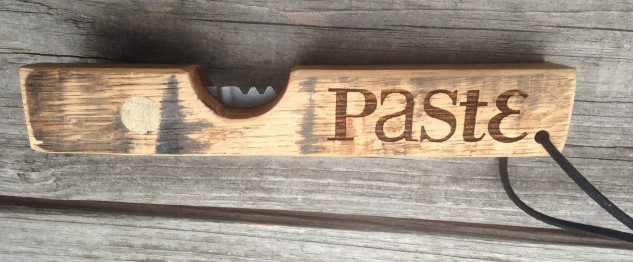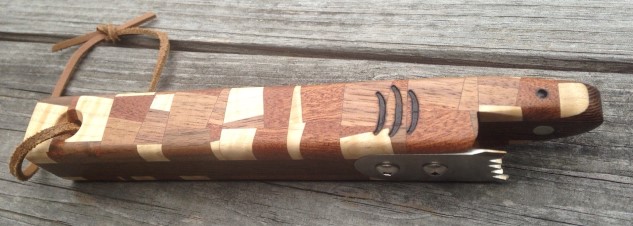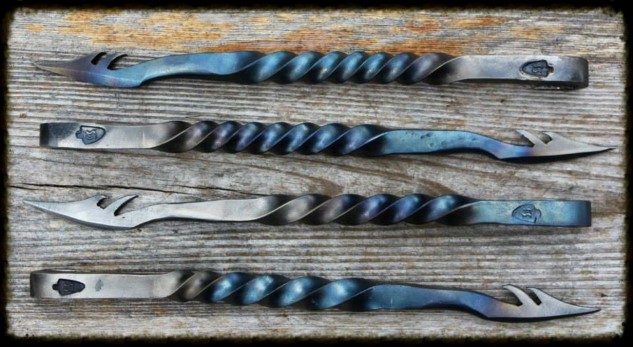Waxed Beer Bottles Suck, So Use These Special Tools to Carve Them Up
Photos by Annie Black and Jim Vorel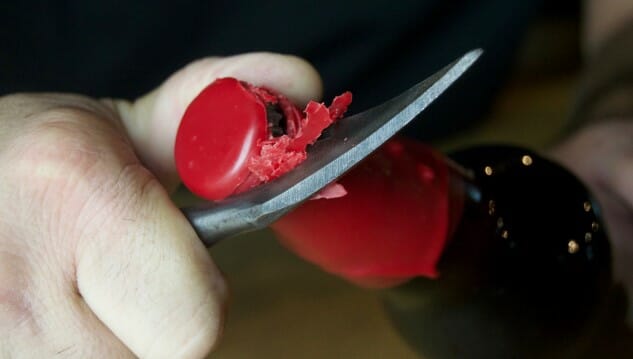
You may recall a piece that I published back in February, which bore a snappy title and simple opinion: “Let’s Face It: Waxed Beer Bottles Suck.” This wasn’t a thesis formed apropos of nothing; it was a long-simmering distaste for the hassle of cutting through waxed beer bottles, combined with research I’d been doing on the scientific side of this debate, which suggests there’s very little difference between waxed and unwaxed bottles in terms of how well they preserve the beer. And it all came to a head after the Paste blind style tasting for January, which pitted us against an absurd 144 barrel-aged imperial stouts. In that one tasting, we hacked our way through a veritable sea of wax, and the result was my previous anti-wax screed.
After that piece was published I received a good number of comments from readers who suggested a variety of better ways than carelessly hacking at the wax-covered bottles with a sharp knife, a tactic that I had brought to the zenith of its potential utility. Instead, readers began suggesting an array of wax cutters and openers specifically designed for these tasks. Leave it to the craft beer community to come up with a solution—and one that crafters can sell for a tidy profit, at that.
The tools suggested to me varied in cost, utility and function, but they all promised to be able to remove wax from bottles. Some, like the YOpener, could scarcely be more simple: Just a small set of metal teeth to be twisted around the wax. Others, such as the Whale Shark, open bottles with a different motion entirely, tearing up through the wax rather than cutting around it. Still others such as the nigh-mythical WhaleSlayer are more expensive specialty items, functioning as art pieces just as much as they are practical tools. Realizing that there was quite a bit of variety here, I decided to get examples of all three and put them to the test.

The wax-ening
It was here that I ran into a bit of a snag. Obtaining the wax cutters themselves was easy—the companies were quite generous in providing them after I inquired, with the makers of the YOpener even engraving our example with the Paste logo. What provided more of a challenge was providing an even playing field of wax for the test.
Initially, I figured “Well, I’ll just go out and get some waxed bottles,” but it didn’t take long to see that idea was impractical, for the following reasons:
A. It would be prohibitively expensive to buy that many bottles of waxed beers, which are likely to be prestige imperial stouts or something equally pricey.
B. It would mean opening a large number of these expensive, likely high-ABV beers all at once, which isn’t something we’re planning to do outside a large-scale bottle share.
C. The wax itself would vary so much as to render the test moot. From bottle to bottle, types and textures of wax can be wildly different. What I needed was some kind of uniformity.
The choice was obvious. The only way that I was going to get consistent results in terms of waxing would be to wax a bunch of bottles myself! And so that’s what I did, filling them with water to simulate the proper weight and heft of a 22 oz beer bottle. I found the waxing process both amusing and annoying—it turns out that you really have to apply repeated, successive coats if you want to build up a good, thick layer, but I eventually prevailed. BEHOLD!
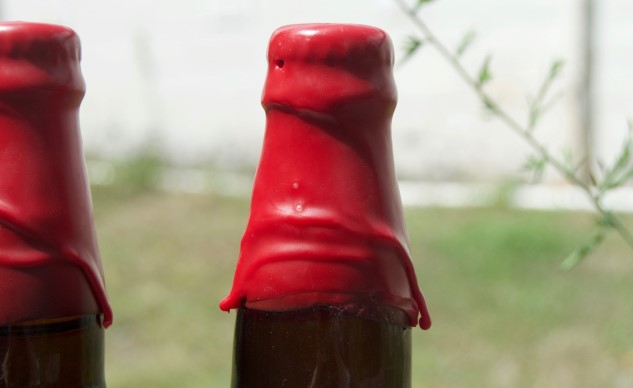
Now I’m ready to remove some wax.
-

-

-

-

-

-

-

-

-

-

-

-

-

-

-

-

-

-

-

-

-

-

-

-

-

-

-

-

-

-

-

-

-

-

-

-

-

-

-

-

